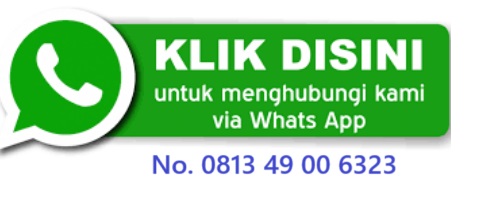Implementasi Model SAVI (Somatis, Auditori, Visual, dan Intelektual) dalam Pembelajaran PAI dan BP pada Anak Tunagrahita di SLB C-C1 Yakut Purwokerto
Keywords:
Islamic EducationAbstract
Teaching Islamic Religious Education and Ethics to children with intellectual disabilities requires innovation in the use of learning models that can be adapted to the limitations of children with intellectual disabilities in understanding material and their abstract thinking abilities. The SAVI (Somatic, Auditory, Visual, and Intellectual) model is one solution because it combines the use of all five senses, body movements, and thinking activities to improve student understanding. This study aims to describe the implementation of the SAVI model in PAI and BP learning for children with intellectual disabilities in grade VII at SLB C-C1 Yakut Purwokerto, with the research subjects being PAI teachers, students, and the school principal. This study is a field study with a descriptive qualitative approach. Data were collected through observation, interviews, and documentation, then analyzed through the stages of data reduction, data presentation, and conclusion drawing. The results of the study indicate that the implementation of the SAVI model has been carried out in accordance with the concept of the SAVI learning model and adapted to the characteristics of children with intellectual disabilities. Learning takes place through four stages: preparation, presentation, training, and presentation of results. Teachers also use a combination of several teaching methods and media that support somatic, auditory, visual, and intellectual elements, making the learning process more active, enjoyable, and easy to understand, and helping students achieve learning objectives optimally
Downloads
References
Fatimah, S. M. (2023). Penerapan Model Somatic, Auditory, Visual, Intelectual (SAVI) dalam Pembelajaran Pendidikan Agama Islam di SMP Negeri 1 Patikraja Kabupaten Banyumas.
Fauzi, & Triono, A. (2021). Dasar-Dasar dan Teori Pendidikan: Mewujudkan Pendidikan untuk Masa Depan Generasi. Rumah Kreatif Wadas Kelir.
Meier, D. (2004). The Accelerated Learning Handbook: Panduan Kreatif dan Efektif Merancang Program Pendidikan dan Pelatihan. Kaifa.
Mudrikah, S., Pahleviannur, M. R., Surur, M., Rahmah, N., Siahaan, M. N., Wahyuni, F. S., & Zakaria, Z. (2021). Perencanaan Pembelajaran di Sekolah: Teori dan Implementasi. Pradina Pustaka.
Muhsin, A. (2020). Implementasi Metode SAVI untuk Meningkatkan Motivasi Belajar Siswa Mojoagung Jombang. DINAMIKA : Jurnal Kajian Pendidikan Dan Keislaman, 5(1), Article 1. https://doi.org/10.32764/dinamika.v5i3.844
Nurhasanah, Hopeman, T. A., & Jakfar, A. E. (2024). Kajian Literatur Review: Penerapan Model Pembelajaran Savi sebagai Upaya Meningkatkan Pemahaman Siswa Sekolah Dasar. Jurnal BELAINDIKA (Pembelajaran dan Inovasi Pendidikan), 6(2), Article 2. https://doi.org/10.52005/belaindika.v6i2.236
Sofia, M. N., Rasyidah, N., & Tari, T. (2021). Pembelajaran Pendidikan Agama Islam Bagi ABK Tunagrahita. Nusantara, 3(3), 459–477.
Subhaktiyasa, P. G. (2024). Menentukan Populasi dan Sampel: Pendekatan Metodologi Penelitian Kuantitatif dan Kualitatif. Jurnal Ilmiah Profesi Pendidikan, 9(4), 2721–2731. https://doi.org/10.29303/jipp.v9i4.2657
Una, L. M. W., Beku, V. Y., Soro, V. M., & Laksana, D. N. L. (2023). Pendekatan Layanan Pendidikan bagi Anak Berkebutuhan Khusus. Jurnal Pendidikan Inklusi Citra Bakti, 1(2), Article 2. https://doi.org/10.38048/jpicb.v1i2.2133
Waruwu, M. (2024). Pendekatan Penelitian Kualitatif: Konsep, Prosedur, Kelebihan dan Peran di Bidang Pendidikan. Afeksi: Jurnal Penelitian dan Evaluasi Pendidikan, 5(2), 198–211. https://doi.org/10.59698/afeksi.v5i2.236
Witasari, R. (2021). Strategi Pembelajaran Pendidikan Agama Islam (PAI) pada Anak Tunagrahita di MI Ma’arif Sidomulyo Ambal Kebumen. BASICA: Journal of Arts and Science in Primary Education, 1(1), 16–40. https://doi.org/10.37680/basica.v1i1.770
Zulaikhah, D., Sirojuddin, A., & Aprilianto, A. (2020). Analysis of Islamic Religious Education Learning Curriculum 2013 for Children with Special Needs. Tafkir: Interdisciplinary Journal of Islamic Education, 1(1), 54–71. https://doi.org/10.31538/tijie.v1i1.6
Downloads
Published
How to Cite
Issue
Section
License
Copyright (c) 2025 Syafa Nurfadilah, Toifur

This work is licensed under a Creative Commons Attribution-NonCommercial-ShareAlike 4.0 International License.






